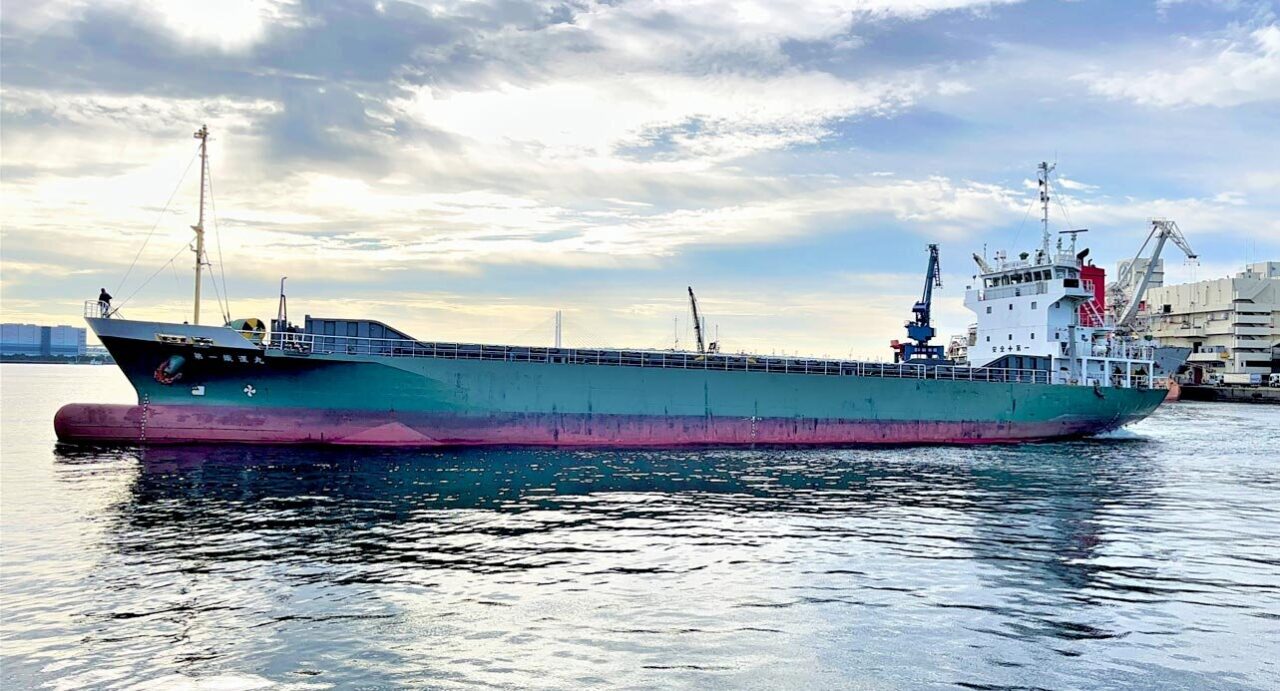Japan’s coastal RoRo pilots waste cooking oil and biofuel mix
Japan's coastal RoRo pilots waste cooking oil and biofuel mix Port Technology International


MOL Successfully Operates Coastal RoRo Vessel Using Biofuel

Mitsui O.S.K. Lines, Ltd. (MOL) has announced that an MOL Coastal Shipping-operated coastal roll-on/roll-off (RoRo) vessel, the ‘Tetsuun Maru No.1’, was successfully operated using biofuel made by mixing waste cooking oil directly with heavy fuel oil.
Introduction
The biofuel used aboard the vessel is created by combining waste cooking oil obtained from vegetable oils and fats in Japan that have not been chemically treated with heavy fuel oil. This is Japan’s first endeavor to employ biofuel in maritime vessels.
Collaboration and Study Program
The biofuel was given to the vessel in the Chukyo region as part of a study program on marine uses of biofuels conducted by Japan’s Ministry of Land, Infrastructure, Transport, and Tourism in collaboration with the cargo shipper, Tokyo Steel Manufacturing Co., Ltd.
Successful Operation
The biofuel mix was utilized by the vessel for almost a month while cruising between Mikawa Bay and Tokyo Bay, with no flammability or other issues identified.
READ: MOL, JERA sign long-term charter agreement for new LNG carrier
Advantages of Straight Vegetable Oil (SVO)
Fatty Acid Methyl Ester (FAME), which is created by the chemical processing of waste cooking oil and methanol, has been the primary raw material for biofuels till now.
In this experiment, leftover cooking oil was reportedly blended with heavy oil A in virtually its original form as straight vegetable oil (SVO) (mixing ratio of Bio was 24 per cent) and utilized in a general-purpose ship type, 499 GT coastal RoRo vessel.
READ: MOL launches shipping payment service
As SVO does not go through the methyl esterification or hydrogenation processes, it is projected to cut CO2 emissions even more than other biofuels and can be delivered at a cheaper cost.
Benefits of Biofuel
Biofuel is marketed as a safe, clean alternative fuel that may be utilized without altering the specifications of the vessel’s primary engines, for example.
It has the potential to be a successful method of lowering CO2 emissions, particularly in small coastal RoRo vessels with limited room for tanks and other equipment necessary for other alternative fuels.
MOL and Pyxis Collaborate on Electric Vessels
SDGs, Targets, and Indicators
-
SDG 7: Affordable and Clean Energy
- Target 7.2: Increase substantially the share of renewable energy in the global energy mix
- Indicator: Proportion of total energy consumption derived from renewable sources
-
SDG 13: Climate Action
- Target 13.2: Integrate climate change measures into national policies, strategies, and planning
- Indicator: Number of countries that have communicated the strengthening of institutional, systemic, and individual capacity-building to implement adaptation, mitigation, and technology transfer
- Target 13.3: Improve education, awareness-raising, and human and institutional capacity on climate change mitigation, adaptation, impact reduction, and early warning
- Indicator: Number of countries that have integrated mitigation, adaptation, impact reduction, and early warning into primary, secondary, and tertiary curricula
-
SDG 14: Life Below Water
- Target 14.1: By 2025, prevent and significantly reduce marine pollution of all kinds, in particular from land-based activities, including marine debris and nutrient pollution
- Indicator: Index of coastal eutrophication and floating plastic debris density
Analysis
The article discusses the use of biofuel made from waste cooking oil in a coastal roll-on/roll-off (RoRo) vessel. Based on the content of the article, the following SDGs, targets, and indicators can be identified:
1. SDG 7: Affordable and Clean Energy
The use of biofuel in the maritime vessel contributes to the goal of affordable and clean energy. The target under this SDG that can be identified is Target 7.2, which aims to increase the share of renewable energy in the global energy mix. The indicator for this target is the proportion of total energy consumption derived from renewable sources.
2. SDG 13: Climate Action
The use of biofuel as a clean alternative fuel helps in taking climate action. Two targets under this SDG can be identified based on the article’s content:
- Target 13.2: Integrate climate change measures into national policies, strategies, and planning.
- Target 13.3: Improve education, awareness-raising, and human and institutional capacity on climate change mitigation, adaptation, impact reduction, and early warning.
The indicators for these targets are the number of countries that have communicated the strengthening of institutional, systemic, and individual capacity-building to implement adaptation, mitigation, and technology transfer (for Target 13.2) and the number of countries that have integrated mitigation, adaptation, impact reduction, and early warning into primary, secondary, and tertiary curricula (for Target 13.3).
3. SDG 14: Life Below Water
The use of biofuel made from waste cooking oil helps in preventing marine pollution. The target under this SDG that can be identified is Target 14.1, which aims to prevent and significantly reduce marine pollution of all kinds, including marine debris and nutrient pollution. The indicator for this target is the index of coastal eutrophication and floating plastic debris density.
Table: SDGs, Targets, and Indicators
| SDGs | Targets | Indicators |
|---|---|---|
| SDG 7: Affordable and Clean Energy | Target 7.2: Increase substantially the share of renewable energy in the global energy mix | Proportion of total energy consumption derived from renewable sources |
| SDG 13: Climate Action | Target 13.2: Integrate climate change measures into national policies, strategies, and planning | Number of countries that have communicated the strengthening of institutional, systemic, and individual capacity-building to implement adaptation, mitigation, and technology transfer |
| SDG 13: Climate Action | Target 13.3: Improve education, awareness-raising, and human and institutional capacity on climate change mitigation, adaptation, impact reduction, and early warning | Number of countries that have integrated mitigation, adaptation, impact reduction, and early warning into primary, secondary, and tertiary curricula |
| SDG 14: Life Below Water | Target 14.1: By 2025, prevent and significantly reduce marine pollution of all kinds, in particular from land-based activities, including marine debris and nutrient pollution | Index of coastal eutrophication and floating plastic debris density |
Behold! This splendid article springs forth from the wellspring of knowledge, shaped by a wondrous proprietary AI technology that delved into a vast ocean of data, illuminating the path towards the Sustainable Development Goals. Remember that all rights are reserved by SDG Investors LLC, empowering us to champion progress together.
Source: porttechnology.org

Join us, as fellow seekers of change, on a transformative journey at https://sdgtalks.ai/welcome, where you can become a member and actively contribute to shaping a brighter future.







